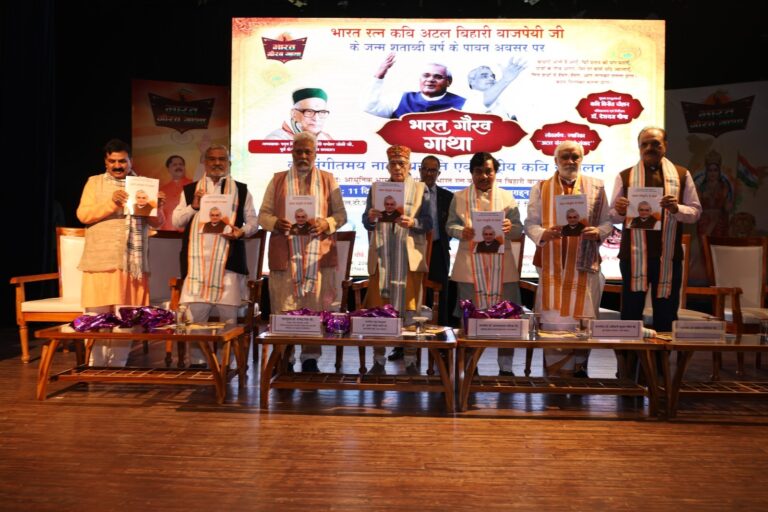
The recent scandal involving Delhi High Court Judge Justice Yashwant Varma has once again exposed the cracks in India’s judicial system. The discovery of unaccounted cash worth several crores at his residence on March 14, 2025, has raised serious concerns over corruption, lack of transparency, and the urgent need for judicial reforms. What adds a dramatic twist to the case is the decision of the Supreme Court to shift him to the Allahabad High Court and the resulting protest on his transfer by the Oudh Bar Association (OBA) of the Allahabad High Court and several other Bar Associations of high courts, who want Justice Varma to remain in Delhi till the pending inquiry, and criminal proceedings initiated against him. Lawyers in Allahabad are even demanding his impeachment.
As the Enforcement Directorate (ED) and the Central Bureau of Investigation (CBI) probe the matter, legal experts argue that this is not an isolated incident but part of a larger pattern of misconduct within the Judiciary.
India’s Judiciary has already witnessed some instances of proven corruption, further eroding public trust. Justice Soumitra Sen of the Calcutta High Court was impeached by the Rajya Sabha in 2011 for financial misappropriation, though he resigned before the Lok Sabha could act. Justice P.D. Dinakaran of the Sikkim High Court resigned amid allegations of land-grabbing and corruption. Justice Nirmal Yadav of the Punjab & Haryana High Court faced trial and resigned after being linked to a cash-for-favours scandal. Justice Shamit Mukherjee of the Delhi High Court was arrested for his involvement in a land scam.
Justice Varma’s case is now considered symptomatic of a larger malaise in the country’s legal establishment. There is a strong viewpoint that unless systemic reforms are introduced, public confidence in the Judiciary will continue to decline.
From judicial independence, accountability, transparency, and the backlog of cases to allegations of corruption and a lack of transparency in judicial appointments, the need for comprehensive judicial reforms has never been more pressing. Over the years, multiple Law Commissions and judicial authorities have put forward a series of recommendations aimed at addressing the system’s fundamental flaws. However, the implementation of these reforms remains slow and often contentious, even as the Law Commissions consistently stressed that these issues required urgent reform.
Transparency International’s Global Corruption Barometer has consistently highlighted concerns about corruption within the Indian judiciary. In its latest ranking, India was placed among countries where judicial corruption is perceived as a significant issue, with a substantial percentage of people believing that court decisions are influenced by bribery and political pressure.
The Law Commissions have consistently highlighted the absence of robust mechanisms for holding judges accountable for misconduct, inefficiency, or corruption. A significant concern raised in judicial reform reports is the absence of formal systems to evaluate the performance of judges, especially at the lower levels. As a result, judges who are underperforming or failing to meet the required standards are often not held accountable. Unlike the Executive or Legislative branches, there is no independent body to oversee judicial conduct.
To address this, the Judicial Standards and Accountability Bill, 2010, was proposed to ensure that judges are held accountable for misconduct or incapacity. The Bill was passed in the Lok Sabha on March 29, 2012, but it was not taken up for discussion in the Rajya Sabha and, therefore, did not become law.
Despite many suggestions being made over the years to address these concerns, a significant gap remains between recommendations and implementation, largely due to resistance within the Judiciary itself, political challenges, and bureaucratic inertia.
Judicial Accountability and Contempt Laws
Eminent jurist late Fali S. Nariman consistently argued that the Contempt of Courts Act, 1971, particularly the provision related to “scandalizing the court,” is overly vague and prone to misuse. Nariman suggested that contempt laws should primarily serve to protect the Judiciary’s institutional integrity rather than shield individual judges from legitimate scrutiny. Arguing that a strong and independent judiciary should be resilient enough to withstand criticism, he had recommended that contempt cases be adjudicated by a five-judge bench instead of a smaller bench to reduce the chances of personal bias and improve the fairness of judgments. While stressing that judges should be open to constructive criticism and that the Judiciary must earn respect through transparency and fairness rather than through the threat of contempt proceedings, he often pointed to mature democracies where courts show greater tolerance for public criticism and maintain credibility by engaging in self-reform rather than suppressing dissent.
A System in Question
At the heart of the crisis also lies the collegium system, which its critics consider to be opaque. The Law Commissions and judicial authorities have frequently raised concerns about the lack of transparency in the judicial appointments process, particularly under the collegium system, which allows senior judges to select their peers. While the system is intended to uphold judicial independence, it has been criticized for promoting favouritism, a lack of merit-based appointments, a lack of transparency, and an absence of external accountability.
The 2015 Supreme Court decision striking down the establishment of the National Judicial Appointments Commission (NJAC), as recommended by the Law Commission, further solidified the Judiciary’s control over appointments, blocking any reforms. The NJAC was to oversee judicial appointments and transfers and was aimed to balance judicial independence with Executive and Legislative checks to ensure fairness and prevent political influence in appointments.
India’s Vice President, Jagdeep Dhankhar, recently criticized the judiciary’s unilateral control over appointments, arguing that greater Executive involvement is necessary to ensure accountability. He stated that judicial appointments should be a process of collective responsibility rather than an opaque system controlled by a few. His remarks were met with strong resistance from the Judiciary, with Chief Justice D.Y. Chandrachud asserting that judicial independence is non-negotiable and any dilution of the collegium system risks undue political interference.
Despite these concerns, many legal experts and political analysts argue that an unchecked judiciary, devoid of transparency, is equally dangerous. Former Supreme Court judge Justice J. Chelameswar has been one of the strongest critics of the collegium system, calling it opaque and arbitrary. Justice R.M. Lodha, former Chief Justice of India, remarked that an independent judiciary is essential, but without accountability, independence becomes an excuse for inefficiency and misconduct. He emphasized that reforms must be carried out with consensus, not confrontation.
Former Law Minister Ravi Shankar Prasad also weighed in on the issue, saying that the judiciary must embrace reforms rather than resist them. He stressed that while the government has always respected judicial independence, it is also necessary to ensure accountability to the people. However, Opposition parties, including the Congress and regional players, argue that the ruling government is attempting to undermine judicial independence under the guise of reforms.
Judicial activism, which has been a hallmark of the Indian Judiciary, particularly under the leadership of Justices like A.M. Ahmadi and J.S. Verma, has led to landmark rulings. While these rulings have been hailed as progressive, judicial activism has also raised concerns about overreach. Critics argue that some decisions have encroached upon the Legislative domain, leading to accusations that the Judiciary has exceeded its Constitutional mandate. A case in point is the landmark Vishakha Guidelines, a pioneering set of directives to prevent sexual harassment in the workplace, considered one of the early examples of judicial activism in India, where the Judiciary proactively filled a legislative vacuum. Though widely regarded as a step forward in women’s rights, they have also been criticized for overstepping the boundaries of judicial authority, as the Legislature had yet to address the issue through statutory law.
More often than not, a debate on judicial accountability ends up with a clash between the Judiciary, the Executive and the Legislature. This often leads to high-profile confrontations over who is encroaching on whose power. One of the most significant conflicts arose with the striking down of the National Judicial Appointments Commission (NJAC) Act in 2015, which sought to replace the collegium system with a more transparent mechanism involving both judicial and executive oversight. The Judiciary’s decision to retain full control over appointments was seen by the government as an overreach, leading to repeated calls for reform.
More recently, in 2023, a dispute erupted between the Judiciary and the Executive over the delay in clearing judicial appointments. The Supreme Court openly criticized the government for withholding names recommended by the collegium, leading to accusations that the Executive was deliberately stalling appointments. Justice S.K. Kaul of the Supreme Court remarked in open court that the delay in appointments is unacceptable. He asserted that the Judiciary must ensure that judicial independence is maintained.
The controversy over judicial appointments has led to significant vacancies across various levels of the Judiciary, adversely affecting the efficiency of the justice system. According to official data, over 4.4 crore cases are pending in Indian courts. The Supreme Court itself has 34 sanctioned judges, yet several positions remain vacant. In the High Courts, nearly 40% of judicial positions remain unfilled, leading to a backlog of cases that has crippled the justice delivery system. More than 5,000 positions remain vacant in lower courts, exacerbating delays in justice.
Union Law Minister Kiren Rijiju has previously stated that the lack of transparency in judicial appointments undermines public trust. He argued that the government should have a greater role in the process. However, judicial leaders argue that political interference would erode judicial independence, leading to biased appointments.
Already, a controversial trend that has raised ethical concerns is the appointment of retired judges as governors and Members of Parliament. This trend began gaining momentum in the 1980s, with Justice Baharul Islam becoming a Rajya Sabha MP and later being appointed to the Supreme Court. More recently, former Chief Justice Ranjan Gogoi accepted a Rajya Sabha nomination from the government, raising questions about post-retirement political affiliations. Critics argue that such appointments compromise judicial independence, as judges may be seen as favouring political parties in the hope of securing post-retirement benefits.
There are a few instances of judges joining politics after retirement in several countries, but such transitions are less common than in India. Even in Israel, where it is not unusual for retired judges to be involved in political roles or advisory capacities, especially given the overlap between legal and political sectors, Mishael Cheshin’s joining politics after his retirement did raise concerns about the potential impact on judicial independence. Former judges of Germany’s Federal Constitutional Court have occasionally become involved in politics, though typically in more academic or advisory roles. However, some, like Jürgen Kühling, a former judge at the Federal Constitutional Court, made moves towards political commentary or engagement post-retirement. In the United States of America, Earl Warren, the Chief Justice from 1953 to 1969, had served as the governor of California from 1943 to 1953, but that was before his time on the Supreme Court. Yet, during his tenure as Chief Justice, some conservative groups expressed concern over his progressive rulings, especially in landmark cases like Brown versus Board of Education (1954), which desegregated public schools. While there wasn’t a direct protest related to his appointment to the Court, his political leanings led to contentious debates during his judicial career, especially from conservatives. In Brazil, Joaquim Barbosa, a former Supreme Court justice, became involved in politics after his retirement and ran for the presidency in 2018, though he did not win. His decision to enter politics sparked significant debate due to his status as a former judge.
As is clear from these cases, former judges entering politics often face scrutiny regarding the balance between their judicial impartiality during tenure and their political engagements post-retirement. Such transitions are viewed with caution in most democracies as they raise concerns about the potential blurring of lines between judicial independence and political influence. In general, the consequences of such political engagements, however, have mostly been public debates and concerns over the independence of the Judiciary. It is high time to take a stand on such appointments. The quicker a stand is made, the better it will be for a democracy like India.
But several internal issues within the courts also undermine a free and fair judiciary. For example, in 2018, four senior Supreme Court judges—Justices J. Chelameswar, Ranjan Gogoi, Madan B. Lokur, and Kurian Joseph—held an unprecedented press conference, alleging that democracy was in danger due to the way the then Chief Justice Dipak Misra was handling important cases. This rare act of dissent from within the Judiciary sent shockwaves across the country. The judges accused the Chief Justice of selectively assigning cases to certain benches, raising concerns over judicial transparency and fairness. The press conference sparked a national debate, with the Opposition demanding judicial reforms, while the government maintained that the Judiciary should resolve its internal issues independently.
In another dramatic moment in India’s judicial history, the then Chief Justice of India, N.V. Ramana, broke down in front of Prime Minister Narendra Modi during an official event, expressing his frustration over the increasing burden on the Judiciary. His emotional appeal highlighted the enormous pressure on the judicial system and the lack of adequate infrastructure to handle pending cases. This incident further fueled discussions on the urgent need for systemic reforms to address judicial inefficiencies.
The issue of judicial reforms has been a focal point for various commissions over the years. The Law Commission of India has repeatedly highlighted the need for judicial accountability and transparency. The 120th Law Commission Report (1987) emphasized reforms in judicial appointments, including a shift towards a more transparent and accountable process, although it fell short of advocating for a complete overhaul of the collegium system. Similarly, the 227th Law Commission Report (2009) recognized the backlog of cases as a grave issue and recommended a national policy for judicial reforms, including the creation of more courts and improved infrastructure.
The Second Administrative Reforms Commission (2005) also suggested significant reforms, proposing the establishment of an Independent Judicial Performance Evaluation Authority to assess the performance of judges and courts. This was intended to improve efficiency and reduce delays. However, many of these recommendations were not implemented due to resistance from various quarters, including within the Judiciary itself.
Despite these efforts, the government has yet to implement many of the Law Commission’s and other bodies’ suggestions in full. The establishment of a National Judicial Commission (NJC) to oversee judicial appointments has been a long-standing recommendation, but successive governments have failed to introduce any concrete legislation in this regard, primarily due to the Judiciary’s strong opposition to perceived political interference.
The Call for Reforms
The Justice Yashwant Varma case, controversies surrounding judicial appointments, and the rising backlog of cases highlight the urgent need for systemic reforms. Insufficient infrastructure—such as outdated courtrooms, lack of proper facilities for judges and litigants, and outdated record-keeping systems—also contribute to inefficiency and delays.
Successive governments have set up commissions to review judicial reforms, but most of their recommendations remain unimplemented. From the Law Commission reports to the Judicial Standards and Accountability Bill, little progress has been made.
As Justice R.M. Lodha warned, judicial reforms must be pursued with determination. Without them, the very foundation of democracy could be undermined.






